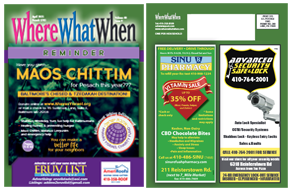
The U.S. food industry is controlled by 10 companies, all competing for our
eyeballs and dollars. Through innovations in food research and technology,
these companies have developed ways to prolong shelf life and enhance flavor,
resulting in products that taste great but have little, if any, nutritional
value, while some may even be harmful to our health. What lies behind the
pretty packaging and safe-sounding claims of these processed products?
Here is some information I thought you should know that is not included on
product labels.
1) Trans
fats, recognized as unsafe in the 1980s and banned by the FDA in 2015, are
still lurking in your food even when the packaging says “0 Trans Fats.” That’s because, in the FDA’s dual role to protect both
consumer and industry, industry won. Trans fats, created by
hydrogenating liquid oil to become solid, preserve the shelf life of foods, an
important factor in keeping costs down for the food industry. Through its
lobbying efforts, the food industry convinced the FDA to allow .5 grams of
trans fats per serving in all processed foods without
listing it on the ingredients label. Check out the serving size in your
favorite box of crackers that says “0 Trans Fats” and do the math.
2) Natural
flavors aren’t necessarily natural. Since “natural” has no legal
definition, the FDA created its own regulations that allow a food producer to
claim natural flavor so long as there is at least one natural ingredient used,
even if there are other chemicals added or used in the extraction of that
ingredient. For people who have food allergies or follow special diets it is
important to investigate what substances comprise the “natural flavor.”
3) High
fructose corn syrup (HFCS) was developed in the 1960s as a cheap substitute
for sugar and a boon to the U.S. corn industry. The problem is that HFCS
suppresses the hormone leptin, which lets your body know when you are full.
Hence you eat more. HFCS is one-and-a-half to two times sweeter than sugar,
triggering higher blood sugar levels and the likelihood of insulin resistance.
Aside from contributing to obesity and diabetes, HFCS can contribute to the
increase of triglyceride (fat) levels in blood, increasing the risk of heart
disease and hypertension. HFCS represents more than 40% of the caloric
sweeteners added to our foods and beverages. Steer clear of HFCS or the new
term, “corn syrup”; these are signs of poor quality – and potentially dangerous
– foods.
4) Artificial
food dyes have been linked to hyperactivity and hypersensitivity in
children and migraines in adults and may contain potentially cancer-causing
substances. According to the NIH, the greatest offenders are Red #40, Yellow #5
and #6, and Blue #1, but all colors with a # attached are equally suspect.
While these food dyes must be listed on the ingredients label, titanium dioxide
may be listed simply as “color added” Artificial dyes are banned in Canada and
Great Britain. In Europe, foods containing these dyes require a warning label
like those on cigarettes. In the U.S., they remain plentiful, especially in
candy and sugary cereals specifically targeted at children.
Kellogg promised
to remove these dyes from their Froot Loops almost a decade ago but hasn’t
yet done so. They do however make their cereal without artificial
food dyes (or preservatives BHT and BHA) for boxes sold in Canada. There is
currently a class action suit to force Kellogg to make their sugary,
non-healthful cereals at least devoid of these harmful chemicals in this
country. Stay tuned.
5) Eating
fat does not make you fat, counterintuitive as it may sound. On the
contrary, when eaten in moderation, good fats create satiety and reduce hunger.
Good fats like olive, avocado, and coconut oil as well as those found in milk
and butter are needed for good brain health since our brains are 60% fat. They
are also essential for nerve conductivity, absorption of nutrients, and keeping
cholesterol and blood pressure under control. Foods that claim to be “low”
or “no fat” will actually contain more refined sugar, refined carbs, and high
fructose corn syrup to make them palatable, all of which are the main culprits
in weight gain. Read the labels to see what’s hiding in those “low/no fat”
foods. Newer terms like “smart” can also be deceptive.
6) Coke puts
salt into its soda. Could it be to deliberately make you thirstier or to
mask the metallic taste that results in many industrially-processed products? Sugar-free
Coke has even more salt. The caffeine in Coke is a diuretic, ushering water out
of your body, which makes you thirstier. The 10 teaspoons (40 grams) of sugar
in a 12 oz. can of regular Coke hides the salt; I couldn’t uncover how the salt
taste is hidden in diet Coke.
7) Yogurt
sounds like a health food, but most of the types parents buy for their kids
are loaded with sugar. The amount of “added” sugar (milk already has its own
natural sugar) is listed on the ingredients label but constitutes an
excessive amount, given the limits recommended for young children. According to
the American Pediatric Association (APA), children up to 18 should consume no
more than six teaspoons (one teaspoon=four grams) or 25 grams of sugar a day and
zero added sugar for babies under two. Yet one Trader Joe’s Greek vanilla
yogurt contains 11 grams of added sugar, almost half the healthful limit – and
that’s without the sprinkles now being sold by many brands. There is growing
research that sugar is not only highly addictive but can contribute to type 2
diabetes, heart disease, and even depression. Beware, as well, of “lite”
yogurts since some sugar substitutes may alter brain chemistry and can still
activate insulin, which only confuses the body.
8) MSG,
monosodium glutamate, occurs naturally in plants and fermented foods and is
added to many processed foods as a flavor enhancer. For some, even a
small amount can cause headaches, flushing, heart palpitations, nausea, or
dizziness. Although the FDA considers it safe, a growing number of studies
suspect MSG as an obesogen correlated with metabolic syndrome and, possibly,
obesity. In other words, MSG may mess with your metabolism. MSG goes by other
names, including but not limited to hydrolyzed vegetable protein (HVP) –
yes, the stuff health-conscious vegetarians eat – calcium glutamate,
mono-ammonium glutamate, yeast extract, autolyzed yeast (a cheaper version of
MSG), soy protein concentrate, and isolate.
Some MSG can
even be hidden in “natural flavor” and “flavoring.” Be cautious of where this
additive may exist if you are one of the small group of people highly sensitive
to it.
9) Industrially-processed
seed oils, also known as vegetable oils – such as canola, soy, corn, and
cottonseed – are in almost all processed foods. One problem, still under
debate, is that the process of extracting oil from seeds, requiring the use of
high heat and potentially harmful chemicals, may alter the structure of these
fats, making them difficult for the body to metabolize. The other problem most
agree upon is that, because of their prevalence in processed foods, most
Americans are consuming too many Omega-6 compared to Omega-3 fatty acids. The
ratio between the two should be 1:1 or at worst 3:1. Today, that ratio is 20:1
for those eating lots of processed and “fast” foods. Omega-3 fatty acids are
found in olive oil, fatty fish, and flaxseed – not the most popular of foods
for many people, especially children. The abundance of Omega-6 fatty acids
leads to excess inflammation and inflammatory
disease, including heart disease, cancer, autoimmunity, Alzheimers,
non-alcoholic fatty liver, and obesity.
10) GRAS
stands for “generally regarded as safe,” and is the standard the FDA
uses to allow food to be sold to the consumer. This standard is established by relying
on “expert opinion” rather than rigorous testing. Some people see this as a
backward approach and would prefer to see “not recommended until proven safe,”
the standard many European countries use.
11) The food
industry is continually seeking ways to get us to eat more. In his
book Salt, Sugar, Fat, investigative reporter Michael Moss
describes how industry scientists conduct tests for ways to make processed
foods even more irresistible by “uncovering the ‘mouth feel’ of fats and the ‘bliss
points’ of sugary snacks” and testing them on focus groups of adults and
children. The added fats, sugars, and other chemicals are designed to stimulate
the dopamine in our brains to create addiction. “Bet you can’t eat just one”
wasn’t just a funny ad line; rather, it reflects a concerted effort to find the
“bliss point,” over stimulate one’s feeling of taste pleasure, “and guarantee
that customers will keep coming back for more.”
What Can We Do?
Food processing
ain’t what it used to be. Once a boon to society, ensuring bacteria-free
ingredients and freezing or canning fruits and vegetables to eat year round, we
now have a multibillion-dollar food industry whose goal is to keep us hooked on
unhealthful ultra-processed products. They have taken food, broken it down, and
reformulated it to produce what barely qualifies any longer as food. It
is often attractive, hyper-palatable, cheap, and ready to eat – the
ultimate in convenience but not in health.
These “foods”
now comprise over 70% of what we find on grocery shelves and are estimated to
comprise 67% of the diet for American children, and 60% for adults. That means
our kids are consuming fewer nutrients, less fiber, and more chemicals, sugar,
and man-made fats than in previous generations. Could there be a connection to
the growing number of children suffering from obesity, fatty liver disease,
mental health issues, and reliance on a multitude of medications?
Reducing the
number of potentially harmful products is not easy or quick. These products are
ubiquitous, and we have all gotten used to their good taste and convenience. We
can start by cutting out or limiting just three ingredients, any of which
can be found on the ingredients label: hydrogenated oil (the source of trans
fats), high fructose corn syrup, and artificial dyes (anything with a # sign). Where
possible, bake your own treats to avoid the trans fats still allowed in all
commercially baked products. This will also reduce other additives. Try to shop
more around the perimeter of the grocery store. Add whole foods – fish, fruits
and vegetables, flax and chia seeds (hide them in smoothies), nuts, whole
grains, and healthy fats like olive and avocado oil to the family diet. Reduce
the empty calories of sugary drinks, mainly soda but also fruit drinks, which
are devoid of fiber, and drink lots of the best beverage available, water.
Here’s to
health!
Jill received her Health Coach certification from the Dr. Sears
Wellness Institute, which promotes four pillars of health – lifestyle,
exercise, attitude, and nutrition.
Sources:
“Who Controls our Food Supply”: www.businessinsider.com/10-companies-control-the-food-industry-2016-9
“Trans Fats”: Cleveland Clinic, June 5, 2023
www.health.clevelandclinic.org/avoid-the-hidden-dangers-of-high-fructose-corn-syrup-video
“Food Dyes: Harmful or Harmless?”: www.healthline.com/nutrition/food-dyes#
“Is Titanuium in Food Harmful?”: www.webmd.com/diet/titanium-dioxide-in
–food
“What Is Red Dye 40?”: ADHD and Brain Health: www.amenclinics.com/blog/brain-health-guide-red-dye-40
“Toxicology of Food Dyes”: www.pubmed.ncbi.nlm.nih.gov
“Artificial Food Dyes”: MedicineNet
8/22/22
“The Coca Cola Conspiracy”: David Airey
The Hacking of the American Mind: Dr. Robert Lustig
“The Endocrine Disrupting Potential of Monosodium Glutamate: www.pubmed.ncbi.nlm.nih.gov/27890806
“Food Industry Development of Processed Food”: www.salon.com
1/15/23.
www.now.tufts.edu/2023/05/08/what
are ultraprocessed-foods-and-why-they-are-bad-for-you






